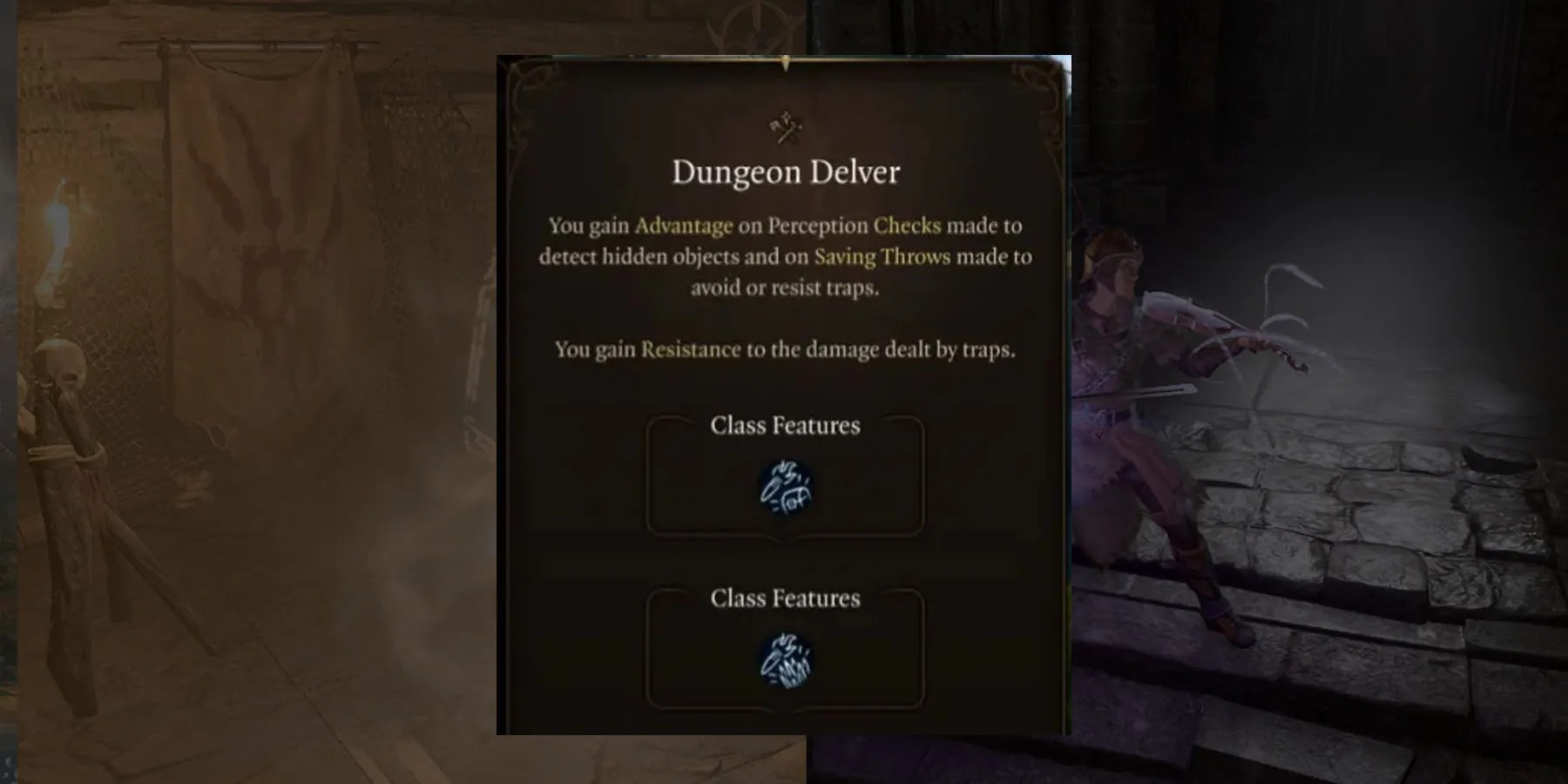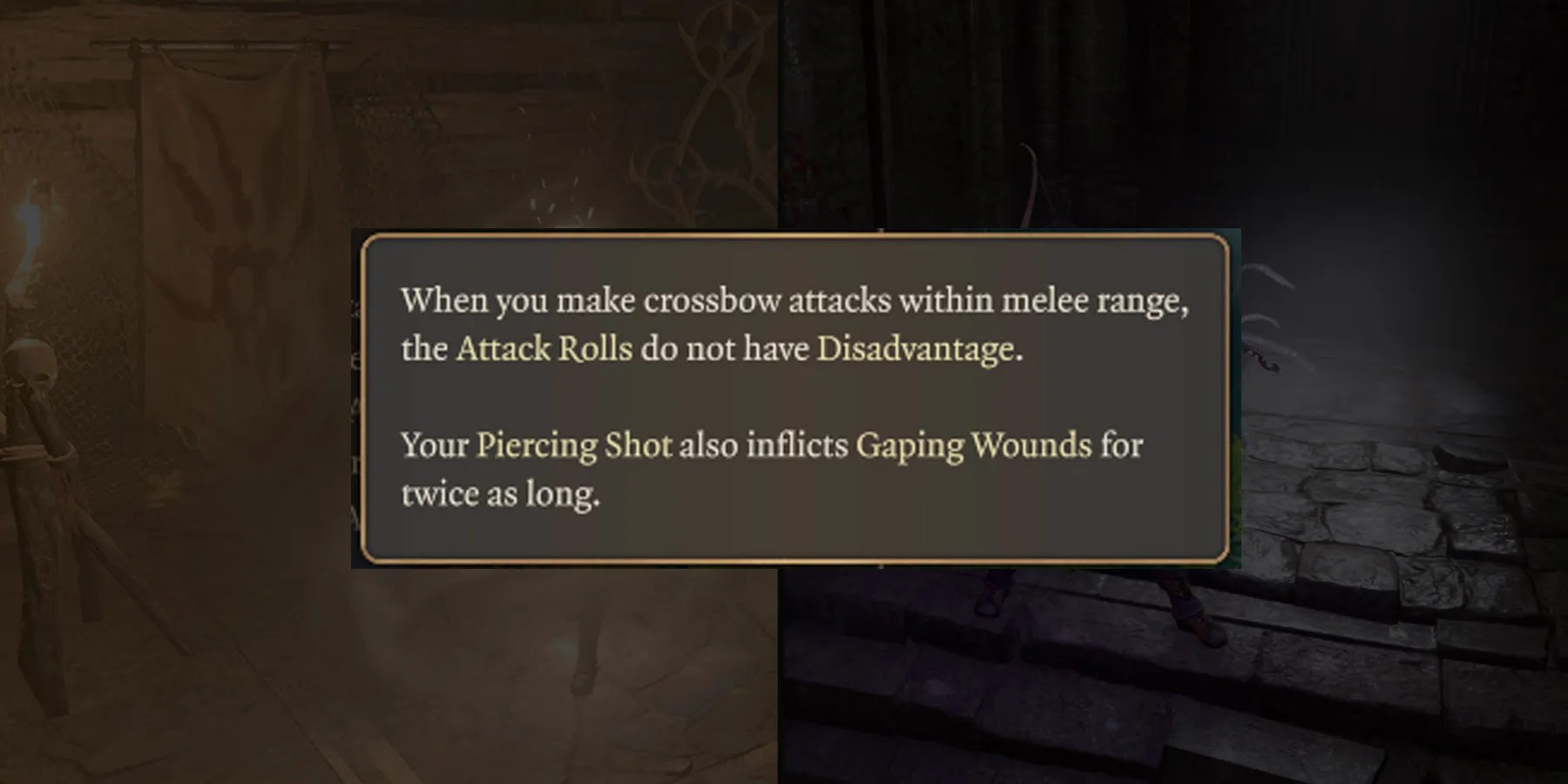Summary
Feats are one of the many ways players ofBaldur’s Gate 3can further diversify their characters, with thisD&Dmechanic providing players with special features that help characters lean towards a particular playstyle. With the right Feat, characters can undertake multiple combat roles, boost their survivability, or buff their combat performance.
However, withBaldur’s Gate 3also boasting the iconic tactical flair of Larian Studios, choosing Feats early on in the game becomes essential in ensuring a party’s smooth trajectory across the RPG’s story. While most Feats have a place in a character build,certain Feats in the early game just aren’t ideal for lower-level builds.

Updated July 07, 2025 by Rhenn Taguiam:With D&D’s 50th Anniversary marking the release of a new Player’s Handbook, fans of the TTRPG should expect mechanics changes to simplify but also optimize their core RPG experience. Since these new changes can motivate new players to try the game, others may be compelled to go wild and choose whichever Feats they think strikes a chord with them as soon as their characters reach Level 4.
However, certain Feats may actually hinder a player’s performance in the early game when chosen too early, with some must-skip Feats including the opportunity to attack spellcasters more efficiently, the freedom to wear Heavy Armor, being able to spot traps in dungeons more efficiently, get extra AC when wielding only one weapon, and even getting a couple of new spells.

1Dungeon Delver
Effect
Advantage on Perception Checks to detect hidden objects, and on Saves to resist and avoid traps
Level 4, All Classes
Why Skip
Players will likely have experienced traps in dungeons before Level 4, making them learn to be more mindful of their immediate surroundings. They can also simply replay Saves
Dungeons inDungeons & Dragonshave become an indispensable part of any campaign, and as such, have been present in an adaptation likeBaldur’s Gate 3.With the acclaimed RPG’s vast cave networks and underground catacombs, it’s unsurprising for unsuspecting adventurers to fall prey to traps. Theoretically, a Feat likeDungeon Delvershould give players a fighting chance against deadly traps, as the Feat’s user gets Advantage on Perception Checks specifically to detect traps and even on Saves to prevent damage from them.

However, Dungeon Delver may not be as useful in the context ofBaldur’s Gate 3as a game. Since a party wipe through a deadly dungeon will likely prompt a reload, players can simply experiment with a dungeon and repeat a playthrough if things go wrong. With this reality always being a possibility, Dungeon Delver seems like a waste of a four-level investment toward getting a Feat
INT or WIS 13, Level 4, All Classes

Rituals in the game aren’t as useful in more intense combat situations
Unlike typical Spells in bothDungeons & DragonsandBaldur’s Gate 3, Rituals serve as an entirely different class of magical effects in that they’re more elaborate to cast but don’t count towards Spell Slot cost. In the bigger action economy ofBaldur’s Gate 3, learning two Rituals withRitual Castercan significantly diversify any spellcaster’s toolkit, especially countering the more flexible and studious Wizards and Clerics.

Unfortunately, despite the innate usefulness of Rituals inD&D 5e, players may have more use out of more direct abilities, attacks, and spells. Rituals may not cost a Spell Slot but they can’t be upcasted either, making them limited in terms of overall strength. Instead of bloating a spellcaster with spells they might not immediately use, something like Magic Adept could be a more efficient alternative, especially since cost-free Cantrips may have more immediate benefits.
Spellcaster Distance Is Negligible For Feat To Be Always Effective
Advantage on Saves against Spells cast within melee range, can use Reaction to attack the caster, enemies have Disadvantage on Concentration Save
Mages will likely not let players get that close when casting

Spellcasters can be some of the most annoying enemies players can encounter inBaldur’s Gate 3,especially when the tacticalD&D 5eadaptation also allows enemies to become more strategic in their approaches to battle. When left unchecked, even a Spellcaster can defeat an entire player’s squad with just the right spell. Thankfully, someone withMage Slayersimply needs to stay close to an enemy spellcaster to get an opening against them. If that spellcaster attempts to cast a spell, the Mage Slayer can use their Reaction to attack the caster. Not only that, they get Advantage on the Save as long as it’s cast within melee range, and the target gets Disadvantage on their Concentration Save.
However, players might find it rather impractical to invest in Mage Slayer if getting the spellcaster within their attack range is likely enough to kill them in a few hits anyway. The first instinct of mages in this situation would be to leave the character’s attack range, provoking Opportunity Attacks even without Mage Slayer. Players may want to use more efficient location-based Feats if they want something like Mage Slayer, such as the defensive Sentinel or more protective Shield Master.

Extra AC More Useful In The Later Game
Reaction can add Proficiency Bonus to AC when attacked while using a Finesse Weapon
Extra AC may only be felt at later levels

The flexibility of weapon setups and loadouts inBaldur’s Gate 3allows players of martial classes to diversify their character, with adventurers ranging from two-handed juggernauts or dual-wielding warriors. However, a player who opts for only onesword-fightingarm with another for a shield can become aDefensive Duelist, wherein they can add their Proficiency Bonus to their Armor Class when attacked while they use a Finesse Weapon.
However, while Defensive Duelist does have its merits for extra protection, it’s not as efficient in the Level 12 maximum progression inBaldur’s Gate 3.At this level, players only get a +4 Proficiency Bonus - which is alright as it is, but the potential +5 Proficiency Bonus at Level 13 and +6 at Level 17 make the Feat more useful by then.

5Heavily Armored
Maximize Medium Armor With More Powerful Attacks, Spells Instead
Armor is an extremely important aspect ofBaldur’s Gate 3,as Armor Class determines how much anyone has to roll to hit a character. Naturally, stronger Plate Armor possess higher AC, but they’re often only immediately accessible to Martial Classes such as the Fighter and Paladin, making them much more naturally defensible and fitting for frontline combat. Thanks toHeavily Armored, even characters with only Medium Armor Proficiency can wear Heavy Armor, as the Feat now bestows Heavy Armor Proficiency.
However, this Feat might not be as useful not just in the long term but also based on the builds who may want to grab this in the first place. Medium Armor wearers such as the Barbarian and Druid often have special features tied to boosting their defensive capabilities outside Heavy Armor, and wearing the latter may even hinder their access to Class-exclusive abilities and features. These builds are better off with Feats either diversifying their slate of traits or simply boosting overall firepower.

The Character Who Needs The Bonus Stat Should Already Know The Bonus Proficiencies
+1 CHA (up to 20), Grants and Doubles Proficiency for Deception (CHA), Performance (CHA)
Face characters should already be Proficient in Deception (CHA)
Sometimes, one of the best ways to play an RPG likeBaldur’s Gate 3is to smooth-talk one’s way to success. Unless a character is the designated Face of the group, however, this task can be difficult. Thanks to theActorFeat, its user not only gets +1 CHA but also gains Deception (CHA) and Performance (CHA) Proficiency, withtheBaldur’s Gate 3Featalso doubling Proficiency Bonuses for the aforementioned checks.
However, there’s no definitive need for players to get this Feat early on in the game. Aside from a default Bard Custom being able to pull off decent checks at the onset, it’s more worthwhile spending the 100 Gold on respeccing to secure base 17 CHA (+3) and getting Actor much later, since 18 CHA (+4) gives a huge Modifier boost.
+5 Initiative, cannot be Surprised
Good Feat but could be traded for hyper-optimizing damage in combat
Being Surprised can be one of the most dangerous situations inBaldur’s Gate 3, with ambushers getting an entire Surprise Round to secure the upper hand. In the worst situations, a character in an ambush can be killed in one blow. Theoretically,Alertgives a character +5 Initiative and ensures that they cannot be Surprised, resulting in enemies losing the chance to them by surprise.
However, players can simply reload their closest save to ensure they can form a counter-offensive before their opponents pull off their ambush. Even if players don’t embrace this metagaming strategy, enemies who have to get close to secure melee attacks give the party an edge, as they have to use less Movement to secure their range.
Decent Source Of Extra STR, DEX With Negligible Extra Benefits
+1 STR or DEX (up to 20), Jump Distance +50%, Standing Up from Prone costs less
Perks with extra STR or DEX are not as viable in combat
Thanks to Jump, players have better access to various locations in theirBaldur’s Gate 3,allowing them to access higher areasand crevices and even jump to low ground without support. However, falling off-balance leads them to become Prone, essentially stopping their movement and requiring a bit of Movement Speed to rise.
WithAthlete, not only do players get +1 to either Strength or Dexterity, but they also take up less movement when standing up from being Prone. Moreover, they get to Jump for 50% more than their regular distance. However, the recovery from Prone and being able to jump further don’t have immediate effects in combat, especially if other party members can aid their struggling comrades.
A Crossbow User Is Better Off Getting Mobility Options
No Disadvantage for Melee Crossbow Attacks, Double Duration of Gaping Wounds (Piercing Shot)
Better to get extra mobility than risk attacking in melee, as Crossbow users will likely be vulnerable up close anyway
While theusual image of a long-ranged weapon inDungeons & Dragonsoften takes the form of longbows and shortbows,Baldur’s Gate 3gameplay lets players snipe in style courtesy of crossbows. WithCrossbow Expert, players no longer have Disadvantage to Attack Rolls when using crossbows in melee.
Unfortunately for players, crossbows now being able to land shots at melee without Disadvantage isn’t the most ideal strategy for originally long-ranged specialists. Builds are likely taken into account with range in mind, meaning it’s more practical for players to just disengage and gain distance instead of trying to attack this close to an opponent.
A Feat Perhaps For Sorcerers, Dragonborn
Ignore Resistance to a Damage Type, and Spells of that Damage Type can’t roll a 1
Level 4, Any Class
Unless using a Sorcerer or a Dragonborn, needing to ignore Resistance can be negligible
Resistances form a crucial part of enemy defenses inBaldur’s Gate 3combat, essentially halving the damage received when they get hit by the corresponding type. When players trycasting heavy-hitting elemental attacks, Resistance can drastically lower DPS and potentially waste a character’s spell slots. And for players who want to receive the same benefits,Elemental Adeptcovers Resistance to Acid, Cold, Fire, Lightning, or Thunder Damage.
However, Elemental Adept doesn’t seem as practical a Feat in the context ofBaldur’s Gate 3. After all, this Feat is tied specifically to one damage type, and none of these elements are too common an occurrence in encounters.